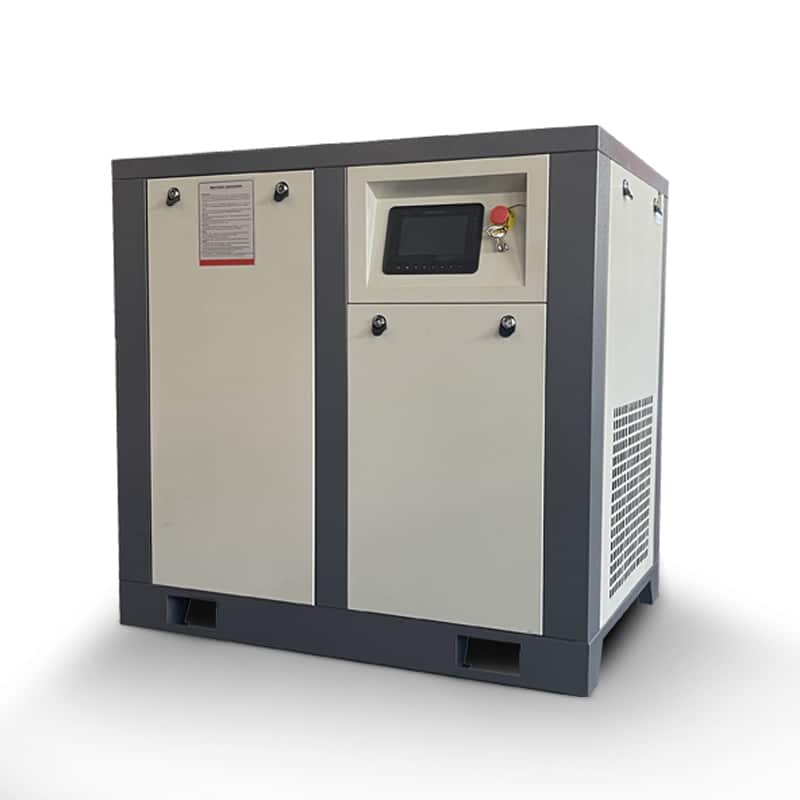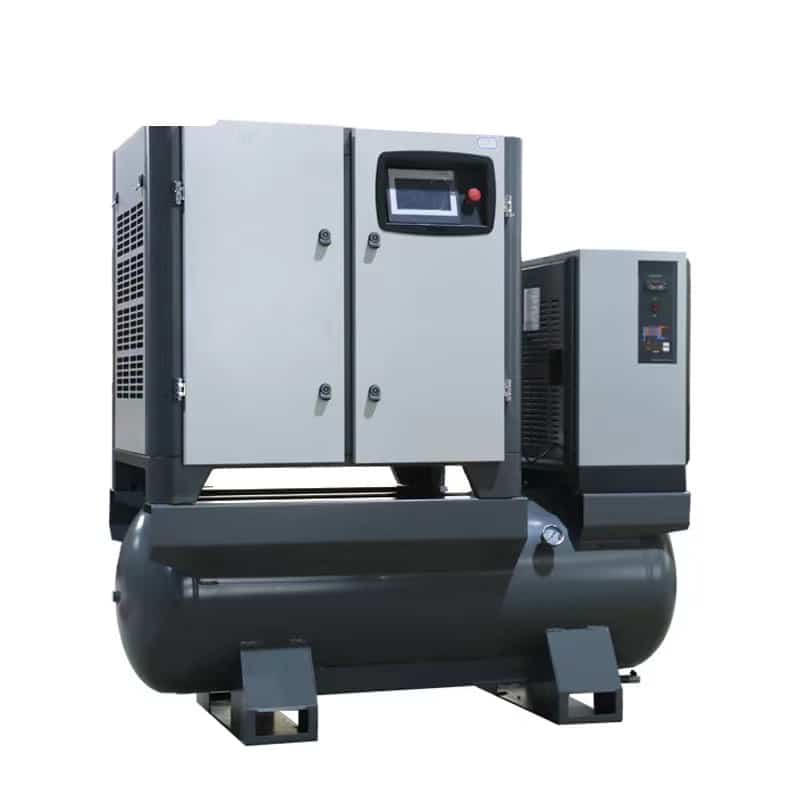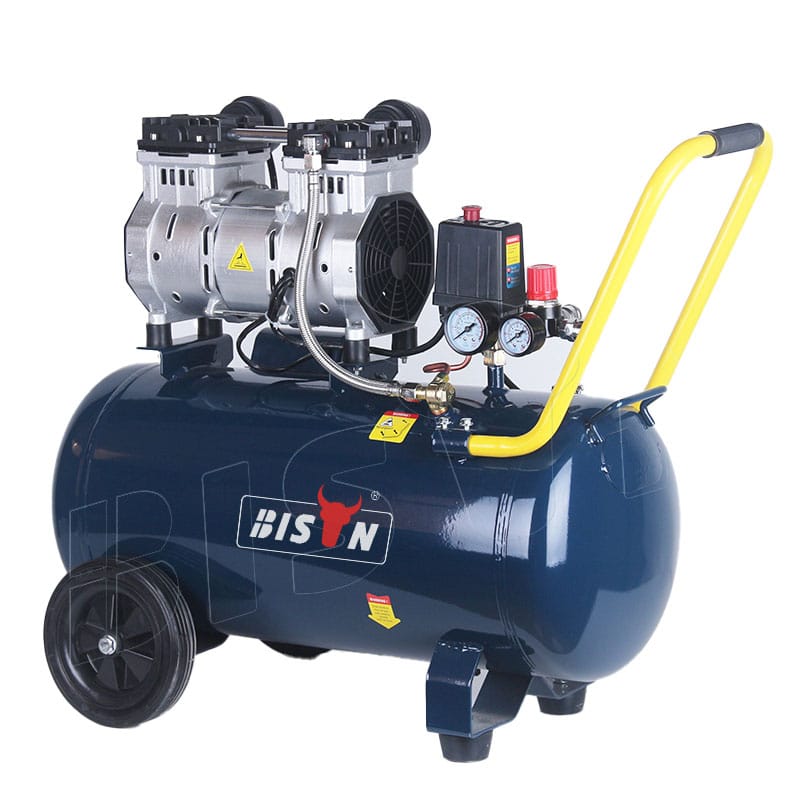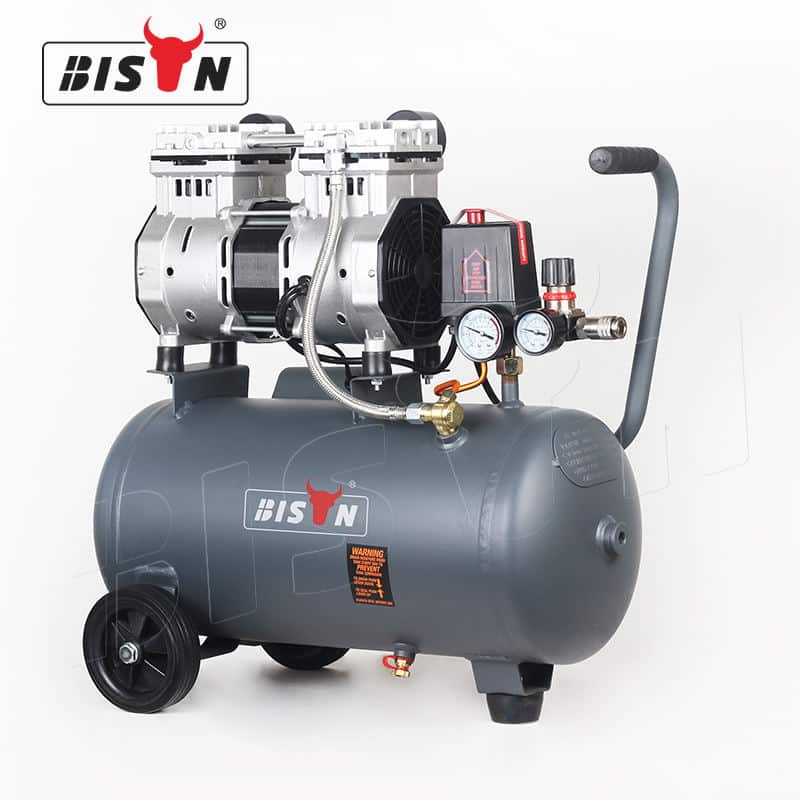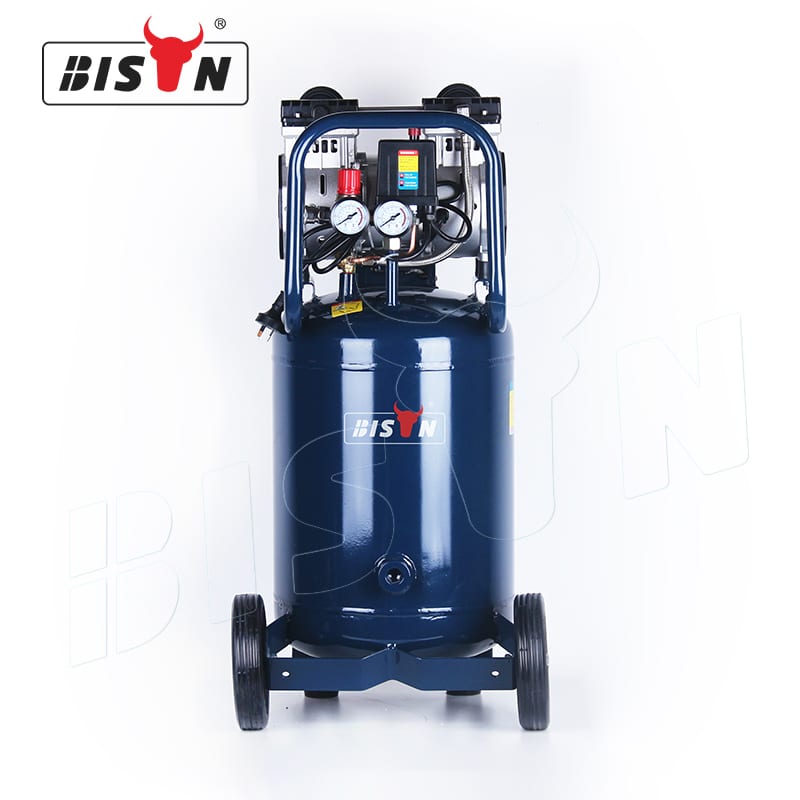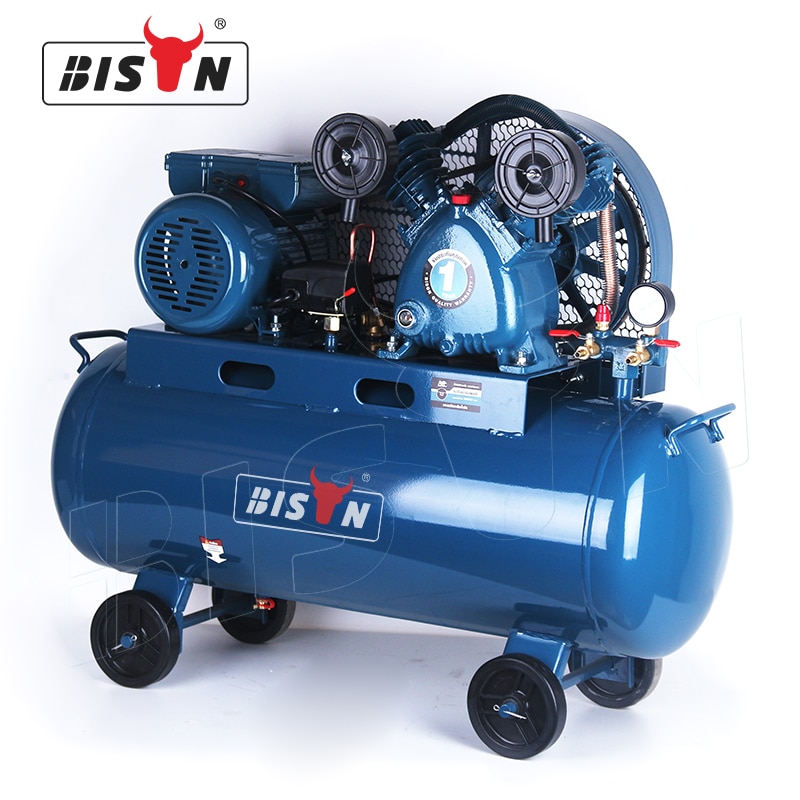air compressor blog
air compressor vibration troubleshooting
- Nov 22, 2023
Do you want to know how to troubleshoot air compressor vibration? Then you’ve come to the right place. Read this BISON air compressor vibration troubleshooting and solve your air compressor vibration problems. Let’s get started.

Rotary screw air compressors and reciprocating air compressor vibration issues can be a headache for many users. Whether operating in a small workspace or a large industrial environment, it is essential to understand the cause of compressor vibration to pinpoint the problem when something is wrong with your equipment.
The following air compressor vibration troubleshooting guide covers the ten most common causes of this problem.
What Causes Air compressor Vibration and its effects?
Vibrations are common in machines and originate from forces related to internal motion. It may not only cause machine damage to the air compressor itself. Also affects all connected peripherals such as dryers, intercoolers and ducts. There are many factors that can cause vibration, such as belts, damaged gears or bearings, pulleys, flywheels, etc. As a professional air compressor manufacturer, BISON has considerable experience in dealing with air compressor vibration.
Common sources of air compressor vibration and possible solutions
There are various causes of compressor vibration, some internal and some external. It would help if you had a compressor vibration analysis of multiple components inside and outside the machine to detect the source. Check the following ten areas for possible sources of vibration in your air compressor:
Mounting bolts
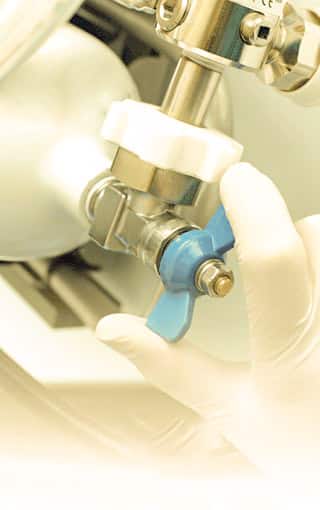
One of the main causes of air compressor vibration is incorrect mounting bolts. If the mounting bolts are not properly tightened or secured, the compressor will lack the necessary stability to operate without shaking. If your compressor is vibrating and you suspect the problem is due to the mounting bolts, check for the following symptoms:
If the mounting bolts are not properly tightened or secured, the compressor will lack stability and cannot operate without shaking.
- Loose
If the mounting bolts are loose, they won’t adequately support your air compressor. Therefore, when the cycle is active, the compressor will vibrate. Even one loose bolt can upset the overall balance. If a bolt is loose, tighten or replace it as necessary.
- Unlevel
If the bolts are not level, the compressor will not have adequate support, whether you are mounting the machine on the ground or an elevated surface. Check the brackets to ensure each makes firm contact with the underlying surface.
- Misalignment
If the mounting bolts are not appropriately attached to the compressor, it doesn’t matter if they fit perfectly to the surface, as the compressor will lack adequate support. Check to make sure each bolt is evenly aligned on the compressor.
- Shaky surfaces
Shaky or trembling surfaces can cause the compressor to vibrate, especially when active. Check that the surface doesn’t shake under pressure. If the compressor is mounted on a table, ensure that each table leg is in firm contact with the ground.
- Uneven surface
If the mounting surface is uneven, you must move the compressor to a perfectly level and flat surface. Check the mounting surface for curvature or slope, and if necessary, move the compressor to another surface area.
If the problem is isolated as a mounting issue, the fix may be easier than you first think.
We have always seen that investing in higher-quality parts like fittings, pipes, hoses, and valves pays off. If you happen to be a distributor in the air compressor industry, you can check out BISON air compressor spare parts. These high-quality parts tend to experience fewer leaks and less downtime. Upgrading to premium parts can help reduce future air leaks and other maintenance issues.
Crankshaft
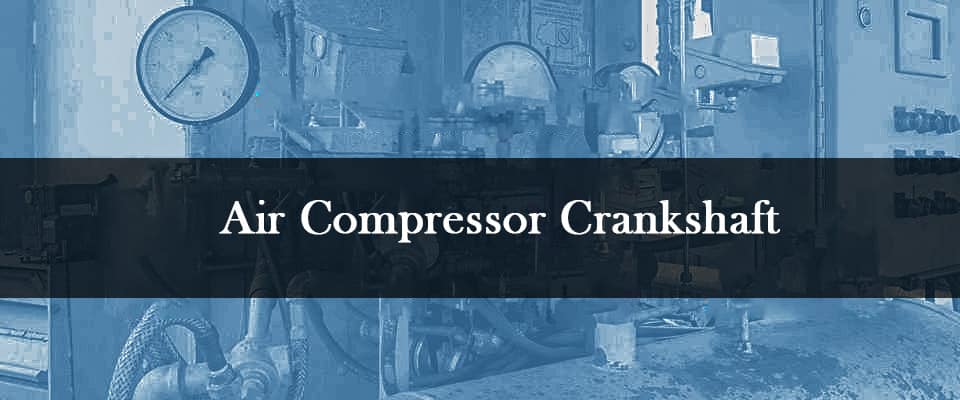
In a reciprocating compressor, ambient air is drawn into the compression chambers through the crankshaft. If there is a problem with the crankshaft, the compressor can experience various performance issues, including vibration. Crankshaft vibrations often result from problems such as:
- Bending
If the crankshaft is bent, it will not work correctly. Due to the constant stress within the compressor, the crankshaft may be ajar. If you suspect the problem is the crankshaft, you need to remove the housing and check to see if the crankshaft is actually bent.
- Rust
When metal parts rust, they don’t work properly. Rust can cause metal parts to become brittle, dull, and weak, all detrimental to components used for vital mechanical functions. If your crankshaft is rusted, it needs to be replaced with a new one.
- Jammed
A jammed component can spell trouble for the internal mechanism of an air compressor, especially if the problem component is as essential as the crankshaft. If the crankshaft is stuck on one end or the other, consult your user manual for a photo of the proper alignment. Unless you are well-versed in compressor maintenance, this problem may require professional help.
- Malfunctions
If the crankshaft isn’t working in any way, the problem can manifest itself in any number of odd behaviors, including vibrations. Whether the crankshaft is moving too fast, too slow, or inconsistently, you may need to replace it.
Crankshaft problems can be intimidating, but they can be easily fixed if you identify them correctly.
Belts
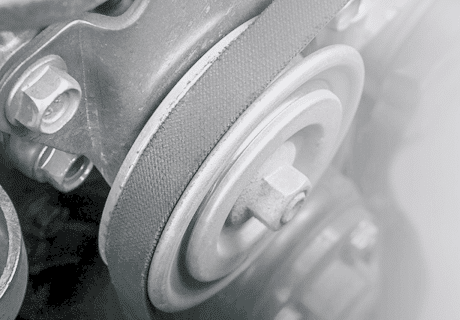
Belts are one of the most critical components in an air compressor. Each belt is in place to regulate the tension and speed of the corresponding parts moving within the compressor motor. If the internal tension is not adjusted properly, the compressor may vibrate as a result. Compressor belt problems usually stem from the following issues:
- Too tight
The purpose of the belt is to adjust the tension. The tension cannot be appropriately adjusted if the belt is too tight for the function at hand. Therefore, the compressor may vibrate due to the excessive stiffness of the motor function. The belt may be too short for the parts in question if the belt is tight enough.
- Loose
In the same way, an overly tight belt can be a problem. A loose belt won’t regulate the speed and tension of the corresponding component. In some cases, the belts can stretch and lose their elasticity. If the belt is loose, your part may be moving too fast, causing the compressor to vibrate, in which case you need a tighter belt.
- Dull
The belt must retain its rubber properties to be sufficiently elastic. If the belt becomes dull and stiff, it may lose its ability to adjust the speed and tension of the corresponding internal components. Check the tension on the compressor belts to see if they are too stiff to work properly.
- Cracks
Once the rubber becomes dull and rigid, the belt will slowly crack. If you notice any cracks in the belt, replace the belt immediately. A cracked belt can break at any time, causing a host of other performance issues.
- Snapping
If the belt has snapped, the compressor may vibrate more and more violently. If you notice such symptoms, immediately turn off the compressor and check the internal components. If you see a broken belt, you’ve pinpointed the main problem.
Fortunately, belt problems are one of the easiest symptoms to fix in an air compressor.
Pulley
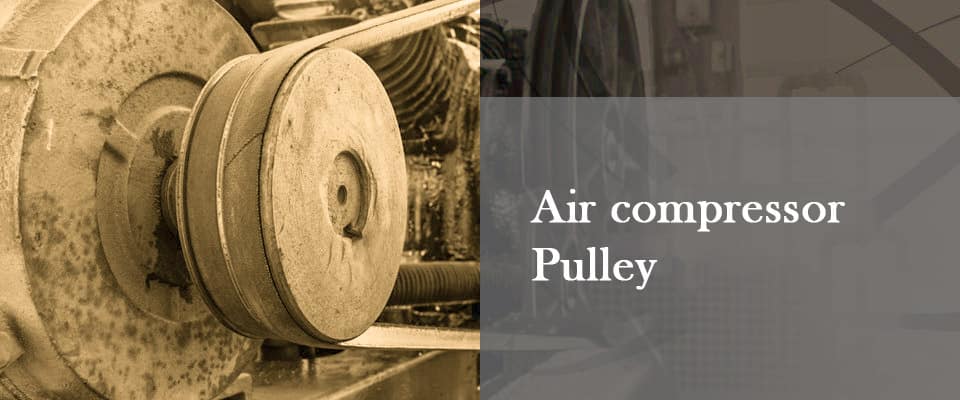
The flywheel and pulley in an air compressor are built on top of each other. Both will only work appropriately if the pulley or flywheel is correctly aligned and intact. Therefore, the air compressor may vibrate due to a pulley/flywheel problem. When inspecting pulleys, look for the following signs of danger:
- Too loose
If the pulley is too loose, the movement of the flywheel will not be adjusted correctly. To see if looseness is the problem, pull on the pulley to see if it tends to expand. Replace it with a more robust pulley if it looks like it’s about to slip off.
- Too tight
Too tight pulleys will restrict the flywheel from moving at the correct speed. The extreme tension this causes can easily vibrate the compressor. Pull the pulley to see if it is elastic enough.
- Stiffness
Sometimes, the pulley is the right size, but the rubber loses any elasticity. When you feel the pulley, check to see if it feels stretchy or stiff, and replace it if necessary.
- Cracked
Like a cracked belt, a cracked pulley can be a nuisance for an air compressor. If you notice a crack in the pulley, it’s only a matter of time before it breaks completely and causes the pulley element to fail. If any cracks are found, replace the pulley immediately.
- Damage
Once the pulley is damaged, the flywheel will not work correctly. The compressor will only run once this problem is fixed.
Like a broken belt, pulley problems are relatively easy to identify and fix.
Flywheel
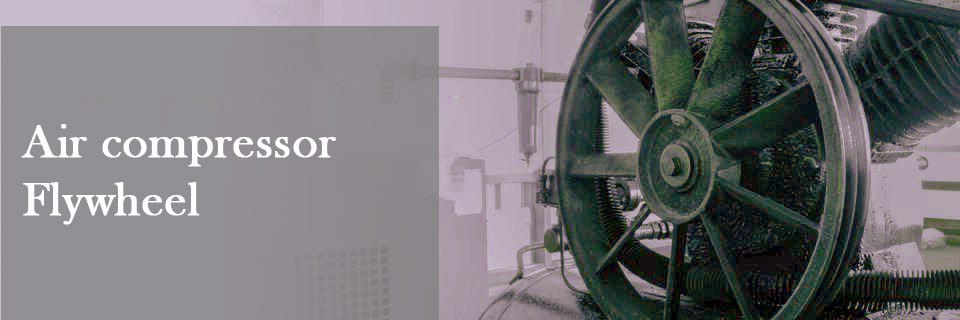
The main purpose of the flywheel is to operate the air pump. Without this feature, you cannot have a functioning air compressor. Flywheels can develop problems over time, and vibration is one of the apparent side effects. A loose flywheel can also cause excessive noise inside the compressor. When inspecting the flywheel, make sure to check for the following issues:
- Misalignment
If the flywheel is not installed correctly, it is easy to have rotation problems. After years of heavy use, the flywheel can become misaligned, in which case you’ll want to check your owner’s manual to see what the accessory looks like and fix the problem or replace the flywheel.
- Loose
A loose flywheel can spell disaster for your air compressor. If you catch the problem when it’s just starting, you can fix it and avoid further costly problems. When checking the flywheel, feel for looseness. Do you notice any vertical rattle when you pull on the flywheel? If so, tighten or replace parts.
- Rust
If there is rust on the flywheel, it will gradually lose its intended function. Rust can grow like a weed on metal parts, so any rust that develops on the flywheel can spread to the fasteners and adjacent components. If the flywheel is found to be rusted, replace the parts immediately.
- Poor fastening
If the fasteners holding the flywheel in place are loose or ajar, the flywheel may shake or strain as air is pumped into the pressurization chamber, causing the compressor to vibrate. If tightening doesn’t work, you may need a new flywheel.
- Improperly installed
If the flywheel in your compressor is a replacement part, it may not be the correct one for your make and model. Check the owner’s manual for information on the right flywheel and replace it if necessary.
Flywheel issues can be problematic, but once you fix the problem, your compressor will work like new ones.
Bearings

Bearings allow the rollers to turn inside the air compressor. If the bearings are inhibited in any way, this can cause trouble for the rolling parts and negatively affect the entire compressor. Two notable side effects of this issue are bearing noise and vibration. Bearing problems usually stem from issues such as:
- Insufficient lubrication
Bearings require lubrication to roll appropriately and avoid surface friction. If the bearing is not lubricated, friction may occur between the bearing and the inner rollers, causing various metals to rust. To avoid these problems, oil the bearings regularly.
- Over-lubrication
Even though a bearing needs lubrication, problems can arise with too much grease. An overly lubricated bearing set can inhibit movement, causing further problems in the compressor mechanism.
- Rust
Due to the constant motion, the effect of rust on a set of roller bearings can be disastrous. Rust that forms on one bearing can spread to other bearings and affect the rollers’ interior. If this happens, the bearings and rollers should be replaced.
- Stress
Bearings are easily affected if there is a problem with the corresponding component in the compressor, causing the rollers to be under stress.
- Depletion
If the roller doesn’t have enough bearings, it may strain to work correctly. This can negatively affect the function of the compressor, causing the machine to rattle when started.
The compressor comprises various rolling and rotating parts, among which the bearing is the most important.
Legs
When vibration persists, one of the most obvious possible causes may be the legs of the compressor. If your compressor is mounted on four legs, problems can easily occur if one or more of the legs is not secure or even comes into contact with the surface below. Check the compressor legs for the following possible symptoms:
- Unevenness
As with chairs and tables, compressor legs must be perfectly flat to function correctly. If one leg is slightly loose, half-open, or not level with the other, adjust it or replace it if necessary.
- Bend
If any of the legs on the compressor are bent, they must be replaced. Usually, when you replace one leg, you should replace them to ensure the leg is perfectly level with the other.
- Unsupported
In some cases, the legs may wobble due to many uneven surfaces. This might be noticeable with a portable machine that only vibrates when you place it on a tabletop. Ensure any surface you use is perfectly flat, firm, and secure.
- Damage
If the compressor leg shows any damage, it should be replaced immediately. The legs play an important role by elevating the compressor body, which should not be in direct contact with the ground. Therefore, leg damage is as serious as damage to the belt, pulleys, or bearings.
- Rusting
If the legs are rusted, they will eventually start to give way. Once rusted, replace the affected part before the problem spreads to adjacent metal, or you could face more costly issues in the coming months.
To avoid vibration, make sure your air compressor is supported on sturdy, even legs.
Air compressor vibration can be circumvented, at BISON Air Compressor manufacturer we provide reliable service and quality parts to everyone from independent users to companies of all sizes in the commercial and industrial sectors, as well as the best screw and reciprocating types compressor. Please contact BISON Air Compressor manufacturer for more information about air compressors.
frequently asked questions about air compressor vibration troubleshooting
Why worry about air compressor vibration?
Every machine vibrates when it is running. No matter how securely a machine is mounted, the machine and all connected structures will experience some unwanted movement due to various forces. These forces are usually related to the activity of various components within the machine. If this vibration-related movement becomes too great, it can cause damage to the machine.
What does the excessive vibration of the reciprocating air compressor mean?
If the compressor is producing excessive noise and vibration, it could be due to the following: Loose pulleys, flywheels, belts, belt guards, coolers, clamps, or attachments, and lack of oil in the crankcase.
What is air compressor vibration analysis?
The vibration analysis aims to determine the dynamic loads of all components of the compressor train and compare them with the maximum allowable values. This requires accurate modeling of all components and an adequate definition of connection areas (interfaces) between all relevant components.
If you have any enquiries about the BISON air compressor, we would love to hear from you.

